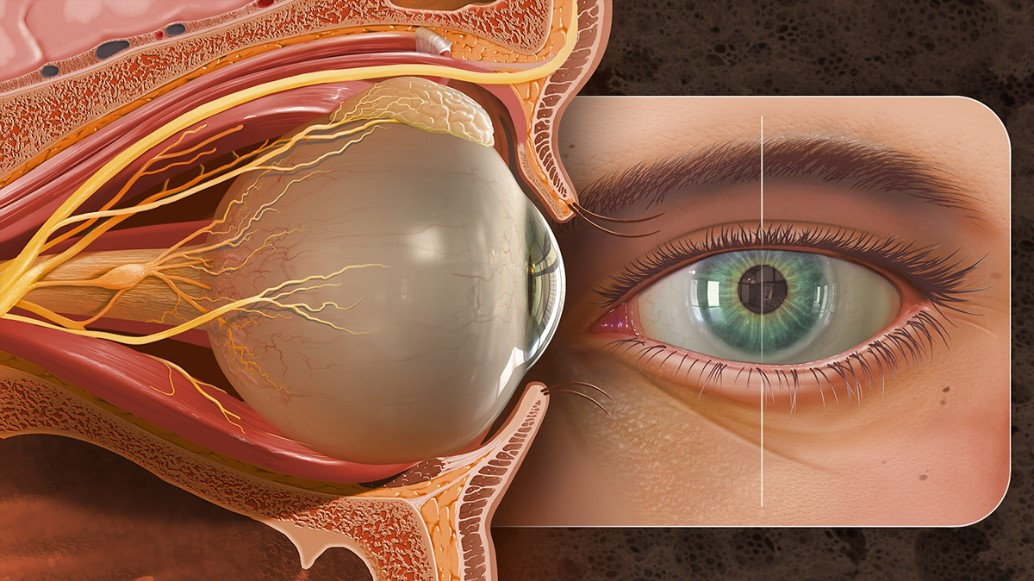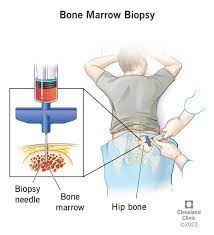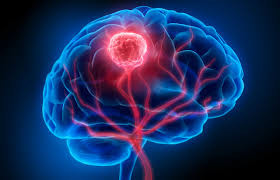Definisi
Tumor liver atau tumor hati adalah kondisi terbentuknya jaringan abnormal di organ hati atau liver. Pada tumor, sel jaringan yang seharusnya mati pada waktunya, terus bertumbuh membentuk tumor.
Hati adalah organ dalam terbesar yang ada di tubuh. Hati berperan untuk mencerna dan menyimpan nutrisi yang diserap dari usus halus, membentuk faktor pembekuan darah untuk mencegah perdarahan hebat saat cedera, dan memecah alkohol, obat, serta limbah metabolisme yang ada di dalam darah.
Tumor liver bisa bersifat jinak atau ganas.
- Tumor jinak liver biasanya tidak menimbulkan gejala dan tidak terlalu mengkhawatirkan. Biasanya tumor jinak ditemukan saat melakukan pemeriksaan radiologi.
- Kanker ganas bisa bermula dari organ hati atau sebagai penyebaran kanker dari organ lain. Walaupun lebih jarang, kanker ganas jauh lebih serius dan bisa turut menyebar ke organ lain.
Penyebab
Masih belum diketahui secara pasti apa yang menyebabkan jaringan tumor terbentuk. Penyebab tumor liver bervariasi tergantung dari sifat tumor serta jenis tumor. Sebelum membahas mengenai penyebab, perlu diketahui dahulu jenis-jenis tumor jinak dan ganas pada organ hati.
Tumor Jinak
- Hemangioma
Jenis tumor liver jinak yang paling sering ditemukan. Tumor ini terbentuk karena kumpulan pembuluh darah yang tidak normal. Hemangioma terjadi pada 5% orang dewasa.
- Kista liver
Kista adalah kantung berisi cairan yang bisa menjadi semakin besar. Bisa menyebabkan rasa tidak nyaman walaupun umumnya tidak menimbulkan gejala. Terapi bisa dilakukan bila ukuran kista liver sudah terlalu besar.
- Adenoma hepatoseluler
Tumor jinak ini merupakan tumor liver yang langka. Adenoma hepatoseluler biasanya dikaitkan dengan penggunaan obat tertentu seperti steroid atau pil kontrasepsi. Sebagian besar kasus umumnya tidak terdeteksi dan jarang berkembang menjadi kanker. Terkadang, tumor bisa pecah dan berdarah.
- Hiperplasia nodul fokal
Tumor jinak ini biasanya sering terjadi pada perempuan usia 20 - 30 tahun. Bentuk tumor terlihat seperti perlukaan atau jaringan parut.
Kanker Ganas
- Karsinoma hepatoseluler
Jenis kanker liver yang sering ditemukan. Umumnya terjadi pada orang-orang yang memiliki kerusakan hati kronis karena terinfeksi virus hepatitis (hepatitis B dan hepatitis C), atau pada pecandu alkohol. Karsinoma hepatoseluler paling sering terjadi pada laki-laki yang berusia di atas 50 tahun.
- Kolangiokarsinoma
Jenis kanker yang jarang terjadi dan menyerang saluran kandung empedu.
- Karsinoma kandung empedu
Kanker ganas langka yang mulai tumbuh dari kandung empedu.
- Hepatoblastoma
Jenis kanker liver ganas yang paling sering menyerang anak-anak yang berusia kurang dari 5 tahun, walaupun kanker ini juga ditemukan pada orang dewasa.
Faktor Risiko
Siapa pun bisa menderita tumor liver, namun ada beberapa faktor yang dapat meningkatkan risiko seseorang menderita tumor liver, yaitu:
- Infeksi hepatitis B atau C.
- Sirosis hati, terbentuknya jaringan parut yang bisa mengganggu kerja dan fungsi organ hati. 80% pasien yang menderita kanker liver ganas karsinoma hepatoseluler biasanya memiliki sirosis hati.
- Merokok.
- Obesitas.
- Konsumsi alkohol berlebihan yang lama.
- Penggunaan pil kontrasepsi hormonal.
- Hemokromatosis, kondisi bawaan lahir yang membuat tubuh terlalu banyak menyerap zat besi dari makanan, sehingga kelebihan zat besi tersebut disimpan di organ hati.
- Tertelan arsenik dari air minum.
Gejala
Tumor liver yang jinak jarang menimbulkan gejala, biasanya keluhan baru dirasakan pasien saat ukuran tumornya semakin besar sehingga mengganggu fungsi organ tubuh. Terkadang tumor liver baru ditemukan ketika pasien melakukan pemeriksaan medical check-up rutin atau pemeriksaan radiologi seperti USG, CT Scan, atau MRI.
Sementara itu, kanker ganas juga umumnya tidak terlihat bergejala bila stadium kanker masih dini. Gejala baru muncul seiring pertumbuhan kanker liver, atau ketika kanker berada di stadium berat.
Gejala yang muncul bervariasi tergantung dari penderitanya. Keluhan yang bisa dirasakan dari tumor liver jinak dan ganas adalah sebagai berikut:
- Nyeri di perut bagian atas
- Mual atau muntah
- Pembengkakan perut
- Gatal-gatal tubuh
- Kulit berwarna kuning (jaundice)
- Tinja berwarna putih atau pucat
- Penurunan berat badan yang signifikan dan tidak diketahui penyebabnya
- Hilang nafsu makan
- Kelemahan tubuh
Diagnosis
Dokter umumnya mendiagnosis tumor liver dengan melakukan wawancara medis, pemeriksaan fisik, dan pemeriskaan penunjang. Dokter akan bertanya mengenai keluhan yang dirasakan saat ini bila ada, bagaimana riwayat penyakit pasien dan keluarga sebelumnya, serta bila pasien sudah melakukan pengobatan tertentu.
Setelah itu, dokter akan melakukan pemeriksaan fisik pada seluruh tubuh pasien, yang dilanjutkan dengan melakukan pemeriksaan tambahan untuk mengonfirmasi diagnosis, antara lain:
- Pemeriksaan darah
Pemeriksaan ini berguna untuk melihat apakah organ hati berfungsi dengan baik. Dari pemeriksaan darah, bisa dilihat juga apakah pasien menderita infeksi hepatitis. Selain itu, pada pasien kanker liver biasanya ditemukan penanda tumor AFP yang tinggi.
- Pemeriksaan radiologi
Ada beragam prosedur yang bisa dipilih dokter untuk melihat pencitraan organ hati. Dengan pemeriksaan radiologi, dokter bisa melihat bila memang ada jaringan tumor, besar ukuran tumor, kondisi pembuluh darah dan jaringan di sekitarnya. Dokter juga bisa mencari tahu bila kanker telah menyebar ke organ lain. Pilihan metode pemeriksaan adalah USG, CT scan, MRI, atau PET scan.
- Biopsi jaringan
Pemeriksaan dilakukan dengan mengambil sampel jaringan hati melalui jarum kecil, ditusukkan dari luar kulit hingga mencapai hati. Sampel tersebut kemudian diperiksa di bawah mikroskop dan diidentifikasi apakah merupakan sel tumor atau bukan.
Tata Laksana
Tata laksana atau pengobatan dari tumor liver tergantung dari:
- Jenis tumor.
- Stadium kankernya pada tumor ganas.
- Usia, kesehatan Anda saat ini, serta riwayat penyakit Anda.
- Tingkat toleransi Anda pada pengobatan.
- Prognosis penyakit, atau harapan hidup pasien dari penyakit yang diderita.
Dokter juga tetap akan meminta pendapat pasien mengenai pilihan terapi yang mau dijalani pasien. Untuk jenis tumor yang jinak dan ganas terdapat metode pembedahan dan terapi non-bedah, yaitu:
- Tindakan operasi, umumnya dipilih ketika tumor liver masih berukuran kecil dan liver masih berfungsi dengan normal. Operasi hanya dilakukan dengan mengambil jaringan tumor dari hati.
- Terapi radiasi, menggunakan sinar berenergi tinggi untuk membunuh atau mengecilkan sel kanker.
- Kemoterapi, menggunakan obat-obat antikanker untuk membunuh sel kanker.
- Transplantasi liver. Pada kasus tertentu, tumor atau kanker dapat berukuran sangat besar sehingga jaringan yang diambil akan sangat besar atau bahkan hampir satu organ tersebut diangkat. Setelahnya dapat dilakukan transplantasi liver menggunakan organ pendonor.
Komplikasi
Pada kanker liver yang ganas, sel kanker bisa terus bermutasi dan menyebar ke organ tubuh lain, sebuah kondisi yang disebut sebagai metastasis. Bila kanker liver yang ganas tidak ditangani sedari dini, kanker bisa menyebabkan penurunan kualitas hidup dan kematian. Bisa timbul juga komplikasi dari prosedur medis yang dilakukan. Prosedur operasi berisiko menimbulkan perdarahan dan infeksi.
Pencegahan
Pencegahan tumor liver cukup sulit dilakukan karena tidak diketahui jelas apa penyebabnya. Tumor liver jinak juga sering tidak terdeteksi pada penderitanya. Meski begitu, ada beberapa cara untuk mengurangi risiko tumor liver dan kanker liver, antara lain:
- Perubahan pola hidup sehat. Makan makanan sehat bergizi seimbang, olahraga rutin.
- Mengurangi minum alkohol karena bisa meningkatkan risiko kerusakan organ hati.
- Mencegah terinfeksi hepatitis dengan vaksinasi, mencuci tangan, dan bila aktif secara seksual, melakukan hubungan seksual yang aman.
Kapan Harus ke Dokter?
Segeralah berobat ke dokter bila Anda mengalami gejala di atas dan faktor risikonya. Bila dokter sudah menemukan adanya tumor di liver, lakukan kontrol dan pengobatan secara rutin.
Mau tahu informasi seputar penyakit lainnya? Cek di sini, ya!
- dr Hanifa Rahma
Liver Tumors. (2022). Retrieved 25 July 2022, from https://www.bidmc.org/conditions-and-treatments/kidney-liver-and-urinary/liver-tumors#.
Liver Tumors. (2022). Retrieved 25 July 2022, from https://www.hopkinsmedicine.org/health/conditions-and-diseases/liver-tumors
Liver Lesions: Types, Causes, Symptoms & Treatment. (2021). Retrieved 25 July 2022, from https://my.clevelandclinic.org/health/diseases/14628-liver-lesions
Nelson, A. (2021). What Are Liver Lesions?. Retrieved 25 July 2022, from https://www.webmd.com/hepatitis/liver-lesions












